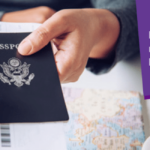Australia is a country that welcomes people from all around the world. In this blog, we will provide an in-depth explanation of the five partner visa subclasses available in Australia, and what you need to know before applying for one.
If you are in a committed relationship with an Australian citizen or a permanent resident, you may be eligible to apply for a partner visa. A partner visa allows you to live, work, and study in Australia with your partner.
5 types of Partner Visa
Here are the five different types of Partner visas available in Australia. Understanding the unique features and requirements of each subclass can help you determine which visa is right for you and your partner.
1. Subclass 300 – Prospective marriage visa
This visa is designed for people who are engaged to an Australian citizen or permanent resident and plan to marry. The visa is valid for nine months and allows you to enter Australia to get married to your partner. After you are married, you can apply for a Partner visa (subclass 820).
To be eligible for this visa, you and your partner must meet certain requirements.
You must prove that you have a genuine intention to get married and that you have met each other in person at least once. You must also provide evidence of your financial and personal circumstances, such as income, employment, and health.
2. Subclass 309 – Partner (Provisional) visa
This visa is for people who are in a committed relationship with an Australian citizen or permanent resident but are not yet married. The visa allows you to enter Australia and live with your partner for two years. After two years, you can apply for a Partner visa (subclass 100).
To be eligible for this visa, you and your partner must prove that you are in a genuine relationship and that you have been in a committed relationship for at least 12 months. You must also provide evidence of your financial and personal circumstances, such as income, employment, and health.
3. Subclass 100 – Partner (Migrant) visa
This visa is for people who have been in a committed relationship with an Australian citizen or permanent resident for at least two years. The visa allows you to live and work in Australia indefinitely.
To be eligible for this visa, you and your partner must prove that you are in a genuine and ongoing relationship and that you have lived together for at least two years. You must also provide evidence of your financial and personal circumstances, such as income, employment, and health.
4. Subclass 820 – Partner visa (temporary)
This visa is for people who are in a committed relationship with an Australian citizen or permanent resident but are not yet eligible for a Partner visa (subclass 801). The visa allows you to live and work in Australia while your Partner visa application is being processed.
To be eligible for this visa, you and your partner must prove that you are in a genuine and ongoing relationship and that you have been in a committed relationship for at least 12 months. You must also provide evidence of your financial and personal circumstances, such as income, employment, and health.
5. Subclass 801 – Partner visa (permanent)
This visa is for people who have been in a committed relationship with an Australian citizen or permanent resident for at least two years and have been granted a Partner visa (subclass 820). The visa allows you to live and work in Australia indefinitely.
To be eligible for this visa, you and your partner must prove that you are still in a genuine and ongoing relationship and that you have lived together for at least two years. You must also provide evidence of your financial and personal circumstances, such as income, employment, and health.
How are visas 820 and 801 connected?
Among the 5 partner visa subclasses, visas 820 and 801 are connected. Visa 820 is a temporary visa that allows you to live and work in Australia while your Partner visa application is being processed. Once your Partner visa (subclass 820) is granted, you will be eligible to apply for a Partner visa (subclass 801), which is a permanent visa.
In addition to the above, it’s worth noting that partner visas require a lot of documentation and evidence to support your relationship. This includes evidence of living together, financial support, and a genuine commitment to each other. It’s essential to provide accurate and complete information to avoid delays or rejection of your application.
🔔 Don’t Miss: How difficult is Nepali NAATI CCL?
Conclusion
In conclusion, obtaining a partner visa in Australia can be a complex and time-consuming process. However, it’s a great opportunity for you to live, work, and study in Australia with your loved one. Understanding the different types of partner visas available and the eligibility criteria is essential before you apply.
If you’re unsure about your eligibility or need assistance with the application process, it’s recommended to seek the advice of a registered migration agent.
FAQ
What is a Partner visa in Australia?
A Partner visa in Australia is a type of visa that allows the partner or spouse of an Australian citizen or permanent resident to live and work in Australia. There are several subclasses of Partner visa, including the Prospective Marriage visa (subclass 300), Partner (Provisional) visa (subclass 309), Partner (Migrant) visa (subclass 100), Partner visa (temporary) (subclass 820), and Partner visa (permanent) (subclass 801).
How long does it take to process a Partner visa application?
The processing time for a Partner visa application can vary depending on a number of factors, including the subclass of visa, the completeness of the application, and the number of applications being processed at the time. Generally, it can take anywhere from several months to a year or more for a Partner visa application to be processed.
What are the requirements for a Partner visa in Australia?
The requirements for a Partner visa in Australia vary depending on the subclass of visa, but generally, you must be in a committed relationship with an Australian citizen or permanent resident, have evidence of a genuine and ongoing relationship, meet health and character requirements, and meet financial and personal requirements.
Can I work in Australia on a Partner visa?
Yes, you can work in Australia on a Partner visa. However, the type of work you can do may be restricted depending on the subclass of the visa and the conditions of your visa.









